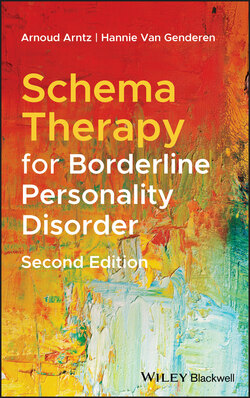Читать книгу Schema Therapy for Borderline Personality Disorder - Hannie van Genderen - Страница 50
Treatment phase: therapeutic interventions with schema modes
ОглавлениеThis is the central phase of therapy and has a duration of about a year (see Chapters 5–10). The general goals of this stage are
Learn to recognize when one of the modes is active
Reassure, and gradually replace, the Detached Protector
Empathize with and protect the Abandoned/Abused Child, to help the Abandoned/Abused Child to receive love, and to help this mode to emotionally process the memories of abuse, neglect, and abandonment
Fight against, and expunge, the Punitive Parent
Re‐channel the Angry and Impulsive Child to express emotions and needs appropriately and reaffirm child's basic rights
Encourage the Happy Child to spend more time on enjoyable things
Help patient to incorporate the Healthy Adult mode, modeled after the therapist
The first phase of therapy aims at teaching patients to recognize their modes. One can also teach the patient to recognize her modes by a “mode guessing game” (see ST step by step 1.07). The therapist explains that he will play how the patient behaves when she is in a specific mode and invites her to guess which mode he was playing. Be aware that the patient doesn't get the impression that you intend to make fun of her. This exercise has the advantage that not only the tone of voice but also the nonverbal signals become clearer. After the demonstration they discuss how this mode can be recognized. After this the therapist can also invite the patient to play one of her modes. In this way the patient gets a better understanding of her modes. This is not to say that it is unnecessary to occasionally return to this point for a short “refresher course” in the mode model at a later stage of treatment. However, at a certain point (after about six sessions) the therapist must stop gathering information and giving explanations and move on to schema mode work. Many therapists find this an uncomfortable point in the therapy. One could describe this moment as similar to the fear of diving off the deep end, particularly when starting with a new technique (e.g., the experiential techniques). Do not hesitate but simply jump in! Of course, one can always turn to the peer supervision group and ask for advice.
